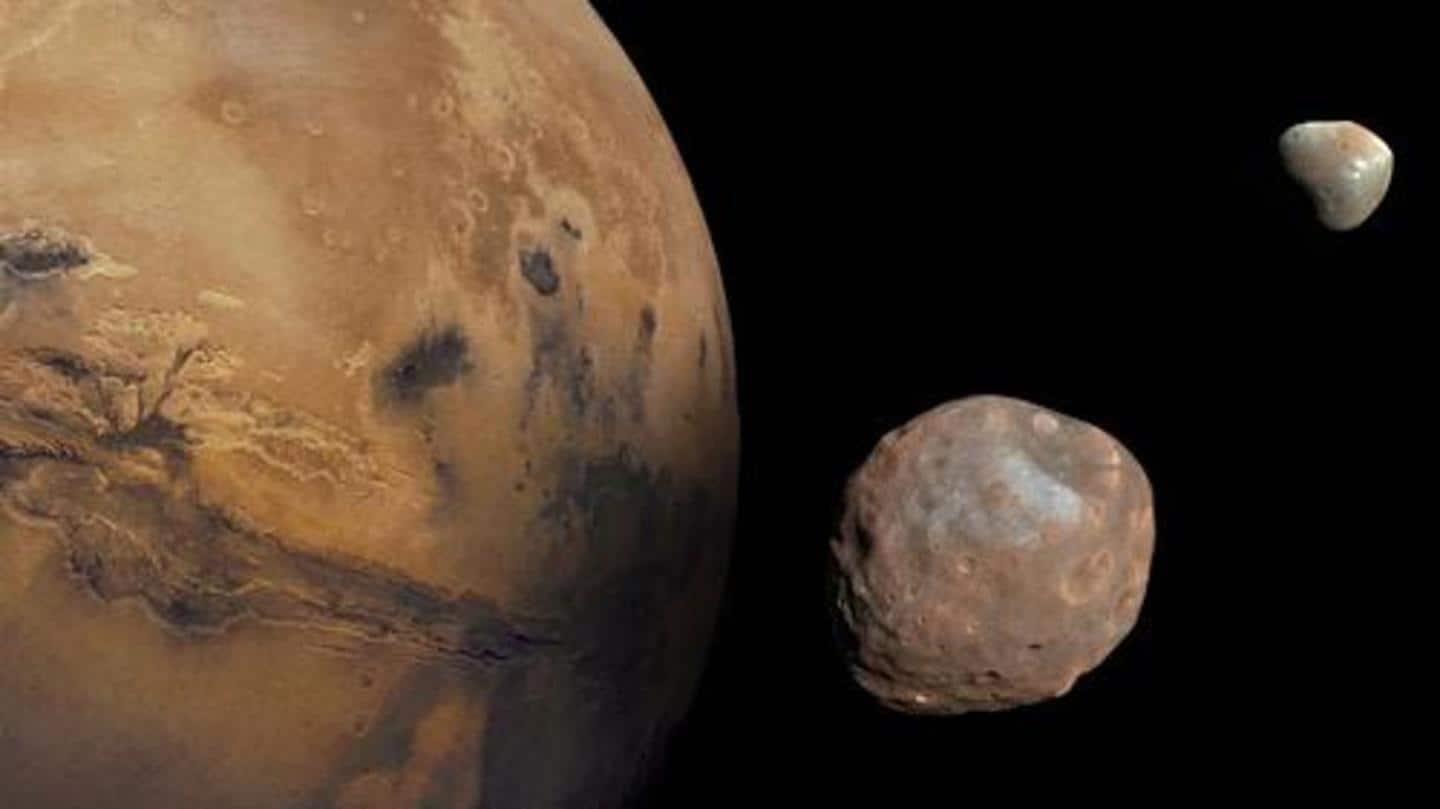
India's Mangalyaan just photographed Mars' mysterious moon 'Phobos'
What's the story
Like Earth has one, Mars hosts two elusive moons in its orbit - Phobos and its smaller, more distant sibling Deimos.
They both are very close to the Red Planet and among the smallest natural satellites in our solar system.
Now, in a major development, India's Mangalyaan has captured a shot giving us a glimpse of Phobos and its surface.
Here's more about it.
Phobos
First, a bit about Phobos
First discovered in 1877, Phobos (and Deimos, too) gets its name from the mythological son of Ares, the Greek God of War.
It sits 6,000 kilometers above the Red Planet's surface and orbits around it three times in a day. It's so close that if you were on the Mars-facing side of the moon, the planet would cover a large part of the sky.
Photograph
ISRO's Mars Orbiter Mission (MOM) captured Phobos from orbit
On July 1, the Indian Space Research Organization's (ISRO) Mars Orbiter Mission, aka Mangalyaan, deployed its color camera to capture a series of images of Phobos.
The shots, combined to create a single, color-corrected composite, were taken when the orbiter was flying about 7,200 km away from Mars and 4,200 km away from Phobos.
"Spatial resolution of the image is 210 m," said ISRO.
Twitter Post
Here's the image from ISRO
A recent image of the mysterious moon of Mars, Phobos, as captured by India's Mars Orbiter Mission
— ISRO (@isro) July 3, 2020
For more details visit https://t.co/oFMxLxdign@MarsOrbiter #ISRO pic.twitter.com/5IJuSDBggx
Features
Several Phobos features highlighted
The shot captured by MOM is a little blurred, but it highlights the lumpy, nonspherical shape of Phobos and its heavily-cratered surface.
ISRO has annotated the image, showing the location of Stickney, the moon's biggest crater, as well as its smaller "crater-siblings" Shklovsky, Roche, and Grildrig.
Stickney, the agency suggests, is a remnant of Phobos' violent past, possibly its collision with some other body.
Achievement
This is a major feat for MOM and ISRO
Even though this is not the first time we are getting a glimpse of Phobos, photographing the tiny moon directly is a major feat for the Mars Orbiter Mission of ISRO.
This is because it is one of the least reflective bodies in the solar system, making it less visible than other objects in space, an ISRO scientist explained to the New Indian Express.
Data
More data is critical to future Mars missions
Gathering more data on Mars and its moons is critical to future missions to the Red Planet.
Meanwhile, the US's National Aeronautics and Space Administration (NASA) is already planning a crewed landing on Moon, which will open the way to Mars.
According to NASA, scientists have already discussed the possibility of using Phobos as a base for observing and launching robots to Mars.